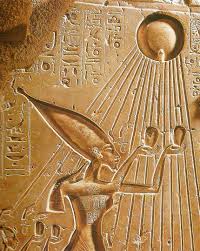The Egyptians saw death as a transitional stage in the progress to a better life in the next world. They believed in reaching to their potential after death. Each person was thought to have three souls.

On account of the death of a person, prayers were recited by the priests and a final attempt was made to revive the deceased. The body was then washed and purified in a special shelter called an Ibu.
The body was then packed with a salt called natron for a period of forty days after which the insides were filled with linen or sawdust, resin, and natron. The body was wrapped in bandages with jewelry and amulets between the layers.
A portrait mask was placed over the head of the deceased by the Chief Embalmer, who wore a jackal mask to represent Anubis. The wrapped body, or mummy, was put into a coffin.
Burial Tombs
Belief in afterlife constitutes the essence of ancient Egypt religious belief. They believed the physical body had to be preserved to allow a place for their spirit to dwell in the afterlife. Thus came into existence, the process of mummification to preserve the body. In addition, large pyramids were constructed as tombs for the pharaohs in the Old Kingdom.
After a period of about 70 days, in which the mummification process took place, the mummy was placed in a decorated coffin. Furniture, carved statues, games, food, and other items useful to the next life were prepared to be buried with the mummy.
The last ritual performed by the priest on the mummy was called the Opening of the Mouth. This ceremony was to magically give the deceased the ability to speak and eat again and to have full use of his body. After placing the mummy in the sarcophagus, the tomb was sealed.
The remnants of Egyptian religion still stand high in the form of Egyptian Pyramids, one of the wonders of the world.